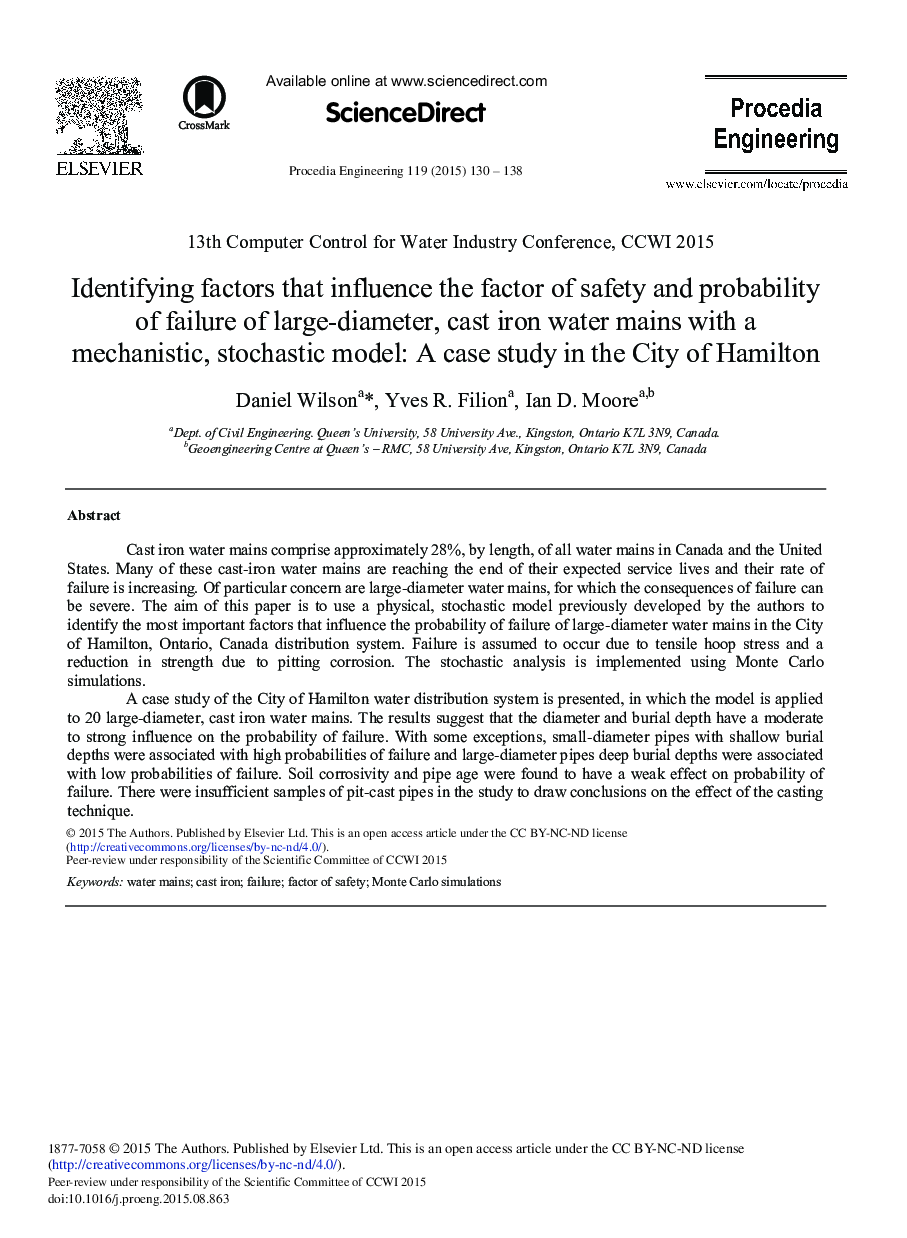| Article ID | Journal | Published Year | Pages | File Type |
|---|---|---|---|---|
| 855377 | Procedia Engineering | 2015 | 9 Pages |
Cast iron water mains comprise approximately 28%, by length, of all water mains in Canada and the United States. Many of these cast-iron water mains are reaching the end of their expected service lives and their rate of failure is increasing. Of particular concern are large-diameter water mains, for which the consequences of failure can be severe. The aim of this paper is to use a physical, stochastic model previously developed by the authors to identify the most important factors that influence the probability of failure of large-diameter water mains in the City of Hamilton, Ontario, Canada distribution system. Failure is assumed to occur due to tensile hoop stress and a reduction in strength due to pitting corrosion. The stochastic analysis is implemented using Monte Carlo simulations.A case study of the City of Hamilton water distribution system is presented, in which the model is applied to 20 large-diameter, cast iron water mains. The results suggest that the diameter and burial depth have a moderate to strong influence on the probability of failure. With some exceptions, small-diameter pipes with shallow burial depths were associated with high probabilities of failure and large-diameter pipes deep burial depths were associated with low probabilities of failure. Soil corrosivity and pipe age were found to have a weak effect on probability of failure. There were insufficient samples of pit-cast pipes in the study to draw conclusions on the effect of the casting technique.
